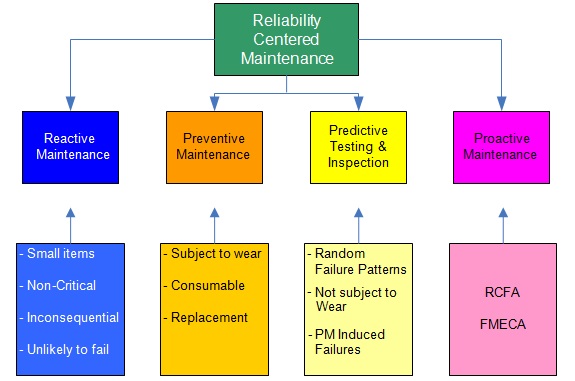Technical Consulting Services
- Operational Excellence
- Quality Inspection and Consulting Services
- Audit Services
- Industrial Warehouse Optimization Services
- Reliability Management
- Commissioning Technical Support Services
- Shutdown Management
- Predictive Maintenance Optimization
- Preventative Maintenance (PM) Optimization
- Maintenance Cost Reduction
- Machine Health Management
- CMMS Selection
- CMMS Super User

Preventative Maintenance (PM) Optimization
What is Preventative Maintenance?
Preventative Maintenance (PM) is a system of scheduled inspections and predetermined maintenance performed on facility equipment.
This may include general upkeep of equipment through the replacement of consumable components, such as lubrication and oil or replacement
of parts subject to wear and tear. The primary goal of PM is to mitigate the negative effects caused by unplanned, reactive maintenance and
avoid untimely and expensive emergency repairs.

(Click On Images To Enlarge)
Carver PA Corporation provides high impact Preventative Maintenance Optimization services by reviewing and analyzing your programs,
as well as training your team to ensure they understand the benefits and applications of such programs. Review the following information
to learn how we can assist you and contact us to develop the ‘right’ Asset Management Strategy for your organization
Benefits of Preventative Maintenance
• Opportunity to replace parts subject to wear and tear before they fail
• Preserves and restores equipment reliability, preventing failures
• Protects and prolongs the functional life of the equipment
• Decreases downtime compared to unplanned repairs
• Decreases costs associated with earlier replacement
• Allows planning to occur and eliminates complete shutdown of a process
• Reduces injury and exposure to workers
Planning equipment maintenance around a process rather than planning your processes around emergency repairs and failures will keep your operation running smoothly,
decreasing costs and stresses on related departments and your workers.
Scheduled maintenance has numerous benefits and is an essential component of all maintenance and reliability programs, but not necessarily every piece of equipment.
The following is one of the models that Carver uses to develop the ‘right’ Asset Management Strategy.
What is Preventative Maintenance Optimization?
PM Optimization is an applied QA methodology that focuses on improving your current maintenance strategies by analyzing and updating the existing program content,
format schedules and then making the necessary changes to ensure the program is the most cost effective for your operation.
PM Optimization should be systematic, ongoing and executed with staff adequately trained in analysis techniques.
Answer the following key questions:
1. Does your organization have experienced PM Optimization Project Leaders or Facilitators?
2. Is your team qualified to rapidly accomplish the following tasks?
a. Remove all maintenance tasks that do not directly manage critical failure modes or are not cost effective.
b. Eliminate duplication of effort by ensuring the same task is not being performed by more than one department
or on more than one PM schedule.
c. Primarily gear towards a condition-based maintenance philosophy.
d. Take the time to accurately list all unpreventable failure modes and only apply ‘mitigating interventions’ rather
than preventative.
e. Ensure maintenance tasks are changed to manage failures that history has shown to be problematic.
f. Spread workload between trades people and operators to ensure adequate skill levels and budgets are met.
g. Adopt a systematic process to ensure cost management stability. This includes, but is not limited to root cause
analysis, defect elimination, planning and scheduling and much more.
h. Harbour a culture of continual review of plant failures and maintenance strategies to ensure your operation continually
improves and successfully matures
i. Defect elimination by applying root cause analysis or similar techniques
j. Apply stringent Planning and Scheduling techniques
k. Adequately collect data on historical failures and performance measures to sufficiently analyze operations and manage costs.
Contact Carver today for more information on how we can rapidly transform your maintenance program and subsequently cut your operating costs while increasing employee safety.


